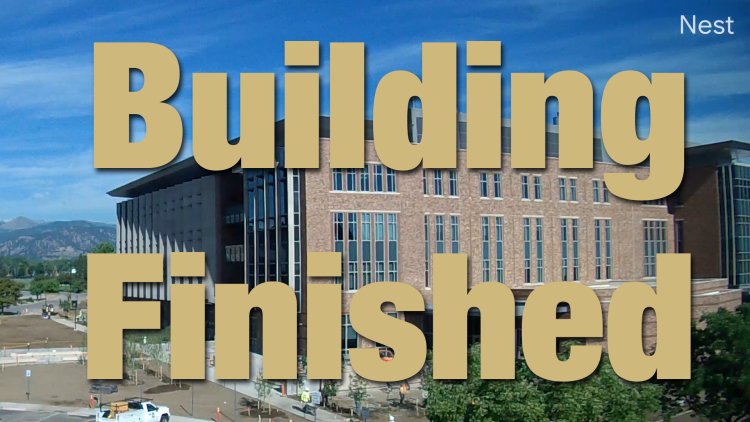New aerospace building construction under way

Live view of the Aerospace Building construction site. Refresh page to update.
A new building is taking shape on the University of Colorado Boulder’s East Campus, and it’s getting an extra boost thanks to expanding student enrollment.
Construction of a 144,000-square-foot dedicated facility for the Ann and H.J. Smead Aerospace Engineering Sciences Department has been underway since October, with grading and foundation work complete, and concrete elevator towers along with the steel superstructure now rising from the earth.
But the University of Colorado Board of Regents recently approved a 29,600 square-foot north wing expansion for the project. Enrollment and research demand for the Aerospace program has continued to grow beyond initial projections, creating a need for additional space to accommodate the rapid ascent.
Constructing the wing at the same time as the rest of the new building will help maximize efficiencies with construction delivery and project costs. The $18.7 million expansion is being integrated into the current work so the full facility opens in time for the fall 2019 semester as originally planned.
The building will position CU Boulder at the heart of the thriving aerospace innovation ecosystem in Colorado, a state ranked first in the United States in aerospace employment concentration.
Located along Discovery Drive between the Sustainability, Energy and Environment Community (SEEC) and the Laboratory for Atmospheric and Space Physics’ (LASP) Space Sciences Building, the new aerospace building will include an indoor flight environment for testing unmanned aerial systems, as well as a unique roof design that accommodates faculty research and provides lines of sight necessary for activities like satellite tracking. The building will also group together aerospace engineering’s six main research clusters in a way that facilitates greater collaboration between students and faculty, and it will provide world-class learning spaces.
The new wing will include additional research, teaching and laboratory space. It will also include a shared-specialty, high-bay laboratory and space for the Space Weather Technology Research and Education Center.
The construction timeline means aerospace engineering students in this year’s freshman and sophomore classes will complete their upper-division course and lab experiences in the new building when it opens in 2019.

